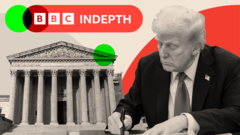Donald Trump’s presidency was marked by an unprecedented number of legal challenges and an intense, often confrontational, relationship with the judicial system. Unlike his predecessors, Trump frequently employed the courts as a primary arena for advancing his policy agenda, challenging perceived political adversaries, and combating investigations. This approach involved aggressive litigation strategies, public criticism of judges, and a willingness to push the boundaries of legal and constitutional norms.
His administration initiated numerous lawsuits, defended against a multitude of others, and often sought to delay or overturn unfavorable rulings through appeals. This extensive engagement with the judiciary served various purposes, from attempting to block legislative inquiries and suppress critical information to shaping regulatory policy and contesting election outcomes. The sheer volume and public nature of these legal battles created a distinct dynamic, where the courts became central to political discourse and governmental operations in a way not previously seen.
This continuous legal maneuvering has significant implications for the future of presidential power. It has tested the traditional checks and balances, potentially setting new precedents for how a president can interact with and exert influence over the judicial branch. By consistently challenging judicial authority and the independence of the courts, Trump’s actions have sparked widespread debate about the separation of powers and the durability of democratic institutions. The long-term effects could include a more litigious executive branch, a redefinition of the boundaries of presidential immunity and executive privilege, and a shifting public perception of the judiciary’s role in political disputes. The era demonstrated a new dimension of executive power, where legal strategies became an explicit tool for achieving political objectives, potentially altering the landscape of governmental authority for future administrations.



